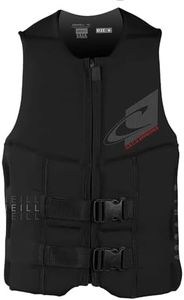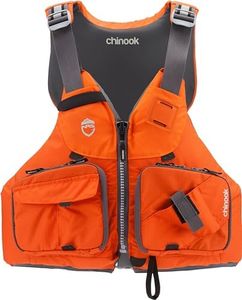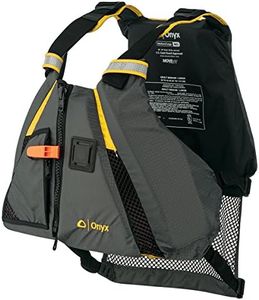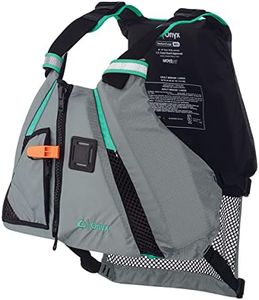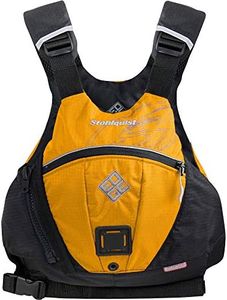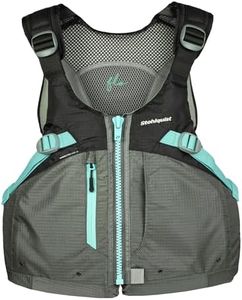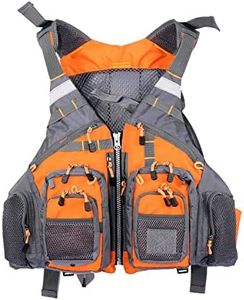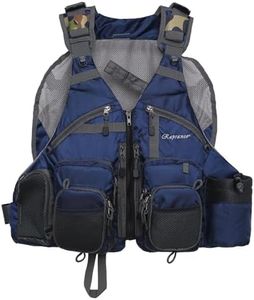We Use CookiesWe use cookies to enhance the security, performance,
functionality and for analytical and promotional activities. By continuing to browse this site you
are agreeing to our privacy policy
10 Best Kayak Fishing Life Vests
From leading brands and best sellers available on the web.Buying Guide for the Best Kayak Fishing Life Vests
Choosing the right life vest for kayak fishing is about finding a comfortable, safe, and functional piece of gear that won’t get in your way while paddling or casting. Since you’ll be wearing it for long stretches and moving a lot, you want a vest that not only keeps you afloat if needed, but also helps you organize and access your gear easily. Pay attention to fit, buoyancy, and practical features that matter for fishing. Remember, the right vest can improve both your safety and your fishing experience.Buoyancy RatingBuoyancy is the amount of upward force the life vest provides to keep you afloat. It’s one of the most critical specs, as it determines how effectively the vest will help keep your head above water. Most kayak fishing life vests fall into the Type III or Type V category. Values are often listed in pounds or kilograms, with adult vests typically offering between 15.5 and 22 pounds of buoyancy. If you are of average build and mainly paddle in calm waters, standard buoyancy is usually sufficient. If you’re larger, carry heavy gear, or fish in rougher or colder waters, consider a higher buoyancy rating. Always ensure the buoyancy rating matches your body weight and fishing environment.
Fit and AdjustabilityFit refers to how snugly and comfortably the vest sits on your body. This is key for both safety and comfort, as a loose vest can ride up or come off in the water, and a tight vest can restrict movement. Adjustable straps at the shoulders, sides, and sometimes waist help you customize the fit. Look for a vest that allows you to get a secure fit without feeling too tight and that doesn’t limit your arm movement, especially for paddling and casting. The right fit is personal—try on several, adjust as needed, and mimic your paddling motion before deciding.
Pockets and Gear StorageOne of the reasons kayak fishing vests stand out is their built-in storage solutions. Pockets, loops, and attachment points help keep essential fishing gear within reach. Sizes and placements of pockets vary; some are made for small tackle boxes, others for tools like pliers or line cutters. Think about the types of gear you need quick access to and consider whether the number and arrangement of pockets will keep you organized. For short outings, fewer, basic pockets may suffice. For longer trips or if you like to keep lots of gear handy, choose a vest with ample, well-organized storage.
Material and VentilationMaterial affects the vest’s comfort, breathability, and durability. Most are made from synthetic materials like nylon or polyester, which resist water absorption and dry quickly. Ventilation panels or mesh sections improve air flow and help prevent overheating on warm days. If you often fish in hot conditions, prioritize breathability and lighter materials. For colder climates, you may prefer solid panels to retain warmth. Consider how the vest feels over your fishing clothing and during different weather conditions.
Mobility and Design CutThe design cut refers to the vest’s overall shape and how much it allows for freedom of movement. For kayak fishing, look for a high-back design that rests above the seat back of a kayak, so you’re not pushed forward or rubbed raw after hours of paddling. Large armholes and contoured panels make it easier to paddle and cast. If you do a lot of active fishing—casting, standing, or switching up lures—prioritize a vest that allows the fullest range of motion.
Reflective Elements and VisibilityVisibility is a safety feature that is especially important when fishing in low light, fog, or busy waters. Reflective strips, bright colors, and visible patterns make it easier for other boaters to spot you. If you often fish early, late, or in areas with motor traffic, opt for a vest with more pronounced reflective and high-contrast panels for extra safety.
